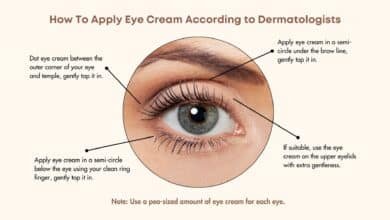Which Display Is Best for Your Mobile? A Comprehensive Guide

Which display is best for your mobile? A detailed guide
Which Display Is Best for Your Mobile, and so is the display technology. Although LCD is prevalent, AMOLED is also slowly taking over this category. So, whether you consider yourself a casual or hardcore user, you must know the difference. Here is our fundamental guide to AMOLED vs. LCD and which could be the best for your mobile device.
What is AMOLED?
AMOLED, the contrapositive of the LCD, is a smartphone display technology. It stands for active-matrix organic light-emitting diodes, meaning your pixels create light. The way it works is this: in the absence of energy, Organic materials acquire a current to construct the setup to make light. The most crucial aspect of AMOLED is that you do not see the color black you see. In all LCDs, when fully backlit, some light was still being shown, which was considered black. Huge contrast issues.
Pros
“True” blacks and contrast ratio: referring to black as a mere absence of light makes it possible to turn the pixels off. This implies that the whites seem vivid, as if nothing else is lit around them. Vivid Colors: Turning pixels off will give you bright, rich colors. When an AMOLED is turned off, the pixels are turned off. Power efficiency: OLED is efficient at remaining black, meaning darkness or dark themes use much less energy than any phone.
Cons
Burn-in: “audacious” memories develop around a static picture or something constantly on the screen in every old AMOLED monitor. Cost: AMOLED is more costly than LCD. What is LCD?
The liquid crystal display is the technology you should know about for your mobile device. It is another classic screen that uses a backlight to illuminate pixels. If you buy something that would have to do with even earlier (3ds), the liquid crystals are used to create pictures on the screen.
Pros
Burn-in: even though a static picture is placed on the screen, with no AMOLED rear-end dis-asteroids, LCD does not contain the phenomenon of photos being etched on them. Cost: cost-effective
Color accuracies: LCD does better in terms of color accuracy in light conditions.
Cons
Weak black levels from the backlight: Because the light is still shining, black is grey. Contrast ranges below 20,000 different synoptic cells are a possibility. The simple specification of the Upgrade Rate Steps.
Standard refresh rates: Most smartphones come with a 60Hz refresh rate, which implies approximately 60 times the screen gets to refresh. It is the standard option unless one opts for a higher model. High refresh rates: Different models in the market have a higher refresh rate, such as 90Hz, 120Hz, or even 144Hz. However, the phone will consume more power since it is doing much more, and the cost to purchase one is also higher. Evaluating the categories above, one would likely opt for the lower alternative, given that most phones have between 60-90Hz, enough to aid the average user in their daily tasks. The Fenadrone video offers more details, including HDR compatibility and pixel density.
Resolution: phones essentially possess Full HD, Quad HD, or 4k screens. The Ultra-High Definition screen can have sharper images, but most smartphones have the 1440p equivalent. Full HD is standard for most mid-range smartphones since it is good enough for most users. The pros of higher resolutions include the clarity of images since users can see more options, including more gameplay for games, and an increased battery life of modern Triple-A games, which allows the phone to operate at a higher level. However, phones are more expensive,
*Increased Power Consumption: Higher brightness will take more power from your battery. *
Adaptive Brightness
The adaptive brightness does precisely what it says: it adapts to the environment that you are in. You can also choose to lock your brightness at a set level or use the adaptive brightness that will adjust with the surroundings.
Pros of Adaptive Brightness:
Battery saving: Adaptive brightness uses the least power when needed and saves your battery life.
Comfort: More brightness means more stress on your eyes. You will have less strain on your eyes.
Cons of Adaptive Brightness:
Sometimes, the brightness will not be desired, and you have to adjust it, leading to a poor viewing experience manually.
*Durability and Protection: Keeping Your Display Safe *
Gorilla Glass and Others
Every smartphone has Gorilla Glass or similar for protection from scratch and falls. This protective glass’s latest and best version is the Gorilla Glass Victus.
Pros of Protective Glass:
Resistance to scratches: Normal wear and tear won’t scratch your screen anymore.
Impact Protection: Your screen will not easily break when your phone falls.
Cons of Protective Glass:
Cost: Better protection will cost more from your pocket.
Conclusion: Choosing the Right Display for You
There is no perfect display; it is the only one for YOU. If you want your colors to pop and your blacks to be deeper, go for the AMOLED display. If you wish your phone to be more economical and rugged on the budget and increase its life, go for that IPS Kodak Panel.
Things to consider are the refresh rate, the resolution, the pixel density, the brightness, and the durability.
Introduction to AMOLED and LCD:
What is AMOLED?
AMOLED stands for Active Matrix Organic Light-Emitting Diode. These are the organic diodes that emit light. In simple terms, these displays are prepped and show their bright colors and deep blacks. Every pixel is lit, and black means turned off. As these are turned off, the “dark” pictures are shown more sharply and take less power than a bright screen.
Vivid Colors
AMOLED screens generally result in more vivid and saturated colors.
Power Efficiency
These screens consume less power while showing particularly dark images or themes.
Cons
Burn-in Risk
If left on for hours, the whites on the display will be replaced by the images of the gallery, newsfeed, or other device interfaces.
Cost
These are usually more expensive than their LCD counterparts.
What Is LCD?
LCD or Liquid Crystal Display technology employs a backlight to let pixels shine. The liquid crystals act as a filter, allowing for varying light intensity. These images are obtained from the television.
No Burn-in
Unfortunately, this technology cannot suffer, making the device unusable for explicit content viewing. Maximum TV watching for hours remains the same.
Cost-effective
These are still cheaper to manufacture than AMOLED displays.
Color Accuracy
It provides the slightest strain for usage in daylight and bright light conditions.
Cons
Inferior Black Levels
, The blacks are compensated for variations these days, and more dark greys appear.
Contrast Ratios
Depending on the situation, it may be less impressive than the AMOLED alternatives.
Related Links
Refresh Rate: Smoothness Matters
Standard Refresh Rates
The standard refresh rate for all displays is 60Hz, which would suffice to fret over even less.
High Refresh Rates
Faster options are 90-120Hz to 144Hz, which the average user must always select since stuck or choppy scrolling is no longer a concern, and the animations have become fluid. Regardless of your activities, heavy gaming, or simply opening your applications.
Various Pros
Drawing on your experiences, consuming any media is no problem due to muffled scrolling.
Great Responsiveness
Related Cons
The first issue with these is that they consume power because they need $10 for apps. They are also more costly to obtain than devices with standard displays.
Resolution: Clarity and Detail
Full HD or Quad HD!
Full HD or 1080p resolution displays are suitable for most users, providing advantages and disadvantages.
1440p resolution displays may take the QA and appearance to the next level with images on the Pan Bigwood.
4K: This ultra-high-definition screen offers exceptional clarity. However, this type of display will be over the top for many users, as this resolution significantly reduces the battery life.
Pros of Higher Resolutions:
– Sharper Images: More detail and clarity are always better for watching films and playing games.
Cons of Higher Resolutions:
– Battery Drain: Higher resolutions require more energy.
– Diminishing Returns: This may not be so noticeable for users with smaller screens.
Brightness and Visibility: See Anytime
* Maximum Brightness
This refined version of the display should have a screen that is as bright as possible. Most of these reproductions are located on modern smartphones. Nits measure the brightness of individual displays; the upper limit for a screen that will be easy to read in the sun is 400–600 nits; brighter is even better.Which Display Is Best for Your Mobile
Pros of Higher Brightness:
– Better Outdoor Visibility: You can view the screen wherever you want, even in direct sunlight.
– Enhanced HDR Performance: The viewer will see more volume and depth of the picture.
Cons of Higher Brightness:
– Increased Power Consumption;
* Adaptive Brightness
Adaptive brightness is also an advantage, as changing the brightness depending on where you are saves battery power.
Pros of Adaptive Brightness:
– Battery Efficiency: The screen will not consume too much energy.
– Comfort: This makes it easier for the eyes.
Cons of Adaptive Brightness:
– Inconsistency: Sometimes, you might need to increase the brightness.
Durability and Protection: Maintain Your Display
Pros of Protective Glass:
– Scratch Resistance
– Impact Resistance;
Cons of Protective Glass:
– Added Cost;
Conclusion: Choose the Right Display for Your Preferences.
The best display may vary depending on your preferences and how you use your mobile. For instance, an AMOLED display may be the best variant for you, as it provides vivid colors and authentic blacks. However, if you are looking for a more affordable option that is also durable, an LCD may be a better tradeoff for you. Furthermore, remember to check obtainable protocols, resolution, refresh rate, brightness, and whether it is durable. Which Display Is Best for Your Mobile




